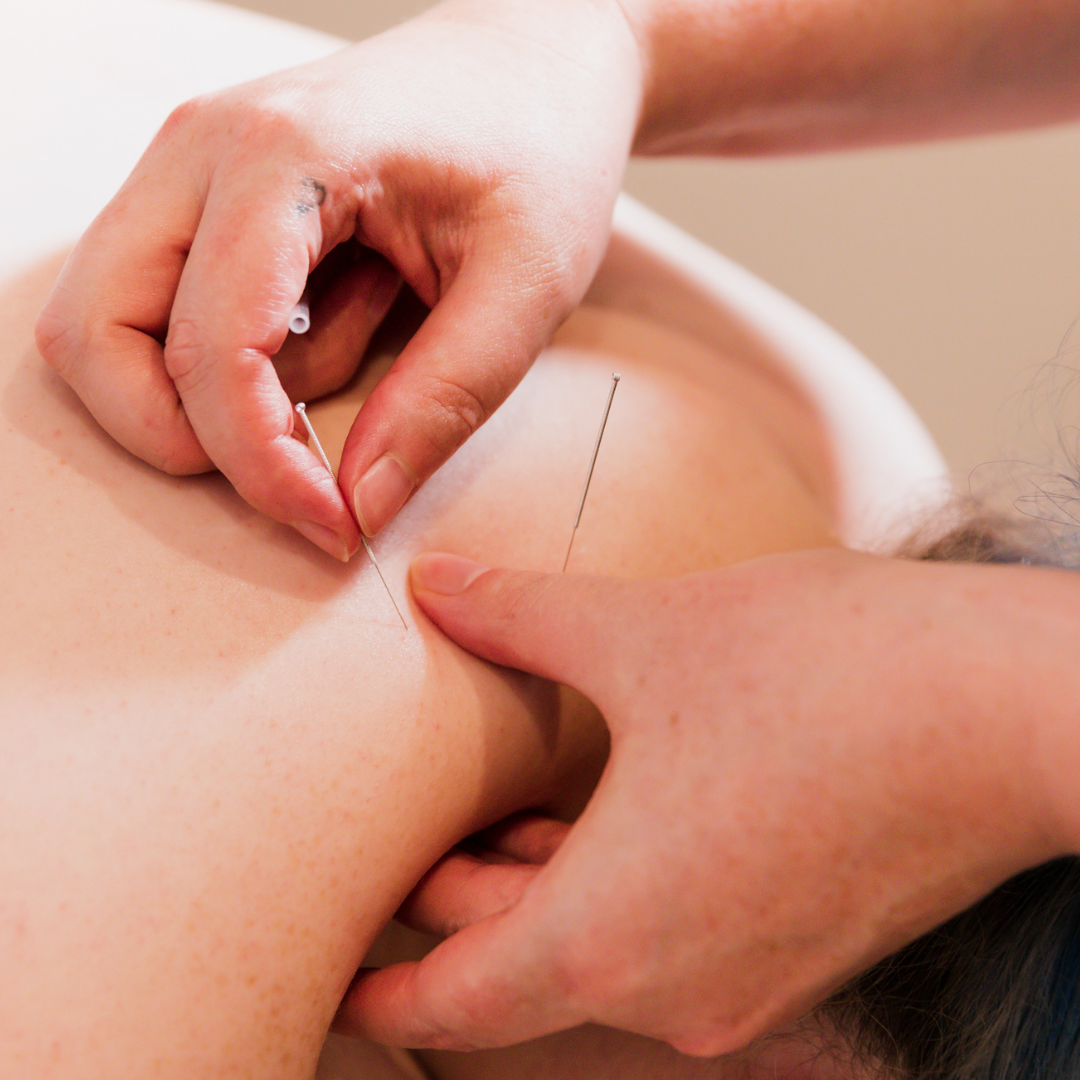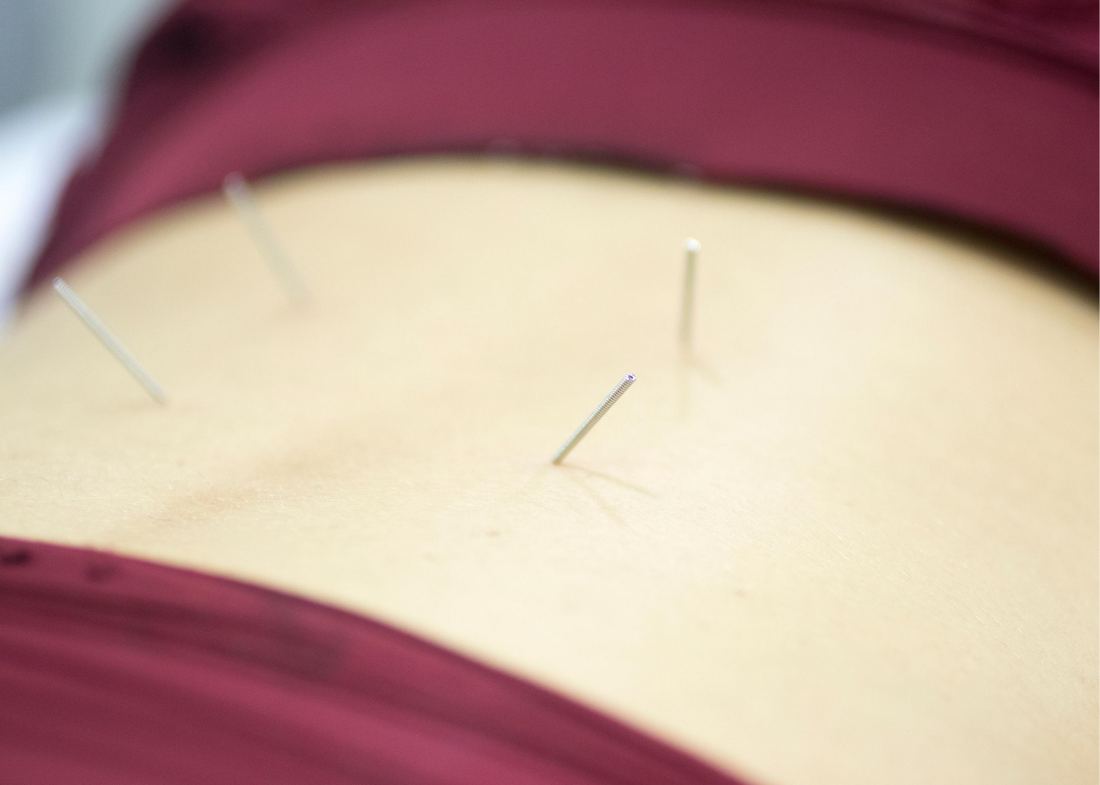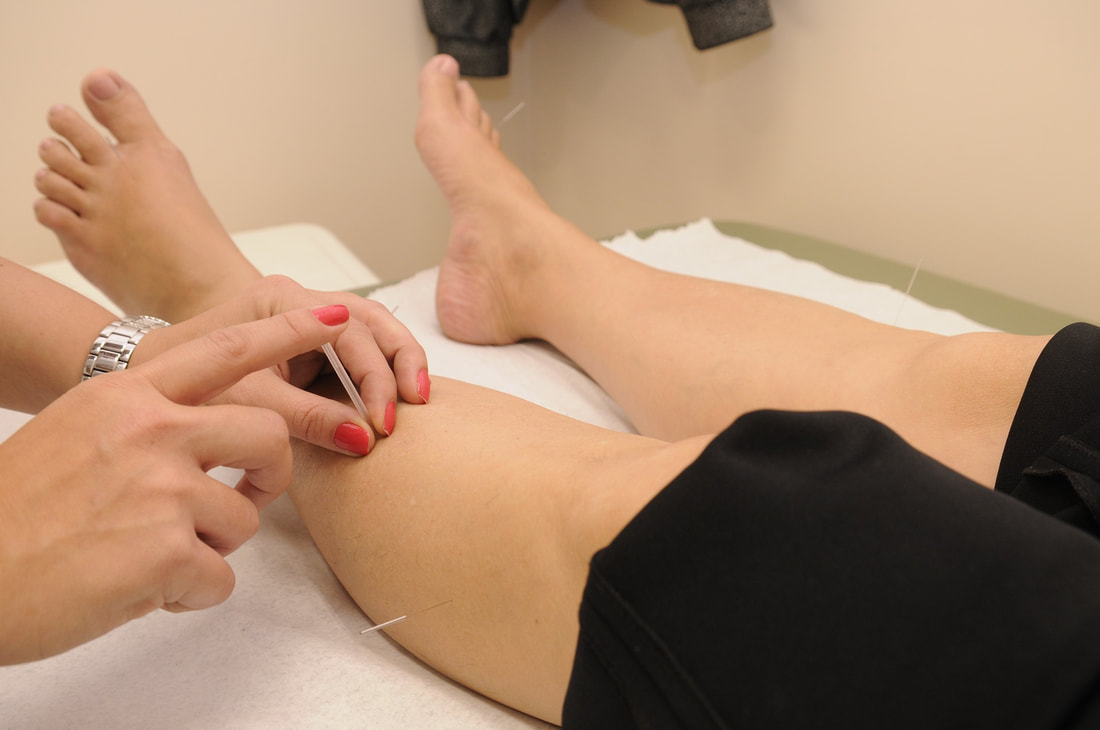|
Myotherapists train extensively in a technique called Dry Needling. Dry needling is a therapeutic technique that has gained popularity in recent years as a powerful tool for relieving musculoskeletal pain, restoring mobility and promoting overall wellness. Its an advanced treatment technique that involves inserting very thin, sterile needles into specific muscles in the body to induce a rapid change in muscle tension. Often the target of dry needling is a trigger point within a muscle. These trigger points are tight bands within the muscle tissue that can cause pain, discomfort, and limited range of motion when they become overly contracted or dysfunctional. The primary goal of dry needling is to alter the muscle tension and promote the natural healing processes of the body. Often this technique can elicit a twitch response from the muscle, causing it to contract and then relax, which is felt as a sudden, involuntary muscle twitch. This contraction and relaxation help to release tension and improve blood flow to the area, which can accelerate the healing process. Its usually not painful, but can be surprising to patients. Some practitioners will use a more stimulating technique to specifically seek out the twitch response which can be highly beneficial, especially for patients who have extreme tightness and pain. For patients who don’t feel comfortable with a very stimulating approach, a gentler technique of positioning and resting needles can also be used with good effect. The type of techniques used really depends on the patient and how their body responds - we see many patients whose bodies are very sensitive to needling and get amazing results from very low stimulation; and we also see many patients who prefer to really “feel it” by experiencing significant twitch responses. Theres no right or wrong way to do it, its always tailored to the individual being treated.
Dry needling can be particularly effective in treating a wide range of musculoskeletal conditions, including chronic pain, muscle stiffness, joint pain, and even some neurological conditions. It is commonly used to address issues such as neck pain, back pain, shoulder pain, and headaches, among others. Athletes and sports players tend to get very good results from dry needling. A gentler approach to dry needling can also be really effective in situations where the pain is so severe that its not tolerable to apply pressure using other myotherapy techniques like massage or joint mobilisation. One of the key advantages of dry needling is its minimally invasive nature. The needles used in this technique are extremely thin, and patients typically experience minimal discomfort during the procedure. Often a pin prick sensation is felt as the needle punctures the skin, and then patients are surprised by how minimal the discomfort of the treatment is. Many patients report immediate relief and improved mobility after a session. Like with any technique where skin is being punctured, there are risks associated with dry needling. Our consent form for treatment provides information on the risks, including things like small bleeds, post needling soreness, and pneumothorax. Its important to know that while risks like pneumothorax (punctured lung) are serious, when you receive dry needling from a qualified therapist the risk is very low due to the extent of the practitioners training and experience. Because of these risks, dry needling should only be performed by trained and qualified practitioners. Our clinic only allows Myotherapists to provide dry needling, because dry needling is included as core curriculum in all Myotherapy training programs. This means your myotherapist has had to study for 6+ months under close supervision and pass exams in order to become qualified. There are short course 2-3 day programs available for therapists to become registered to provide dry needling, which is why you may find remedial massage therapists, physiotherapists, chiropractors and osteopaths who offer dry needling. These practitioners only get a very short amount of time to learn and practice in their weekend course before they begin offering dry needling to patients. Want to give dry needling a go? Book online and make sure to pick one of our 5 Myotherapists as your practitioner. Dry Needling is a manual therapy technique used by Myotherapists to help reduce pain and tension in muscles. We've previously discussed the similarities and differences between Dry Needling and Acupuncture, but you may still be wondering - how does Dry Needling actually work? The "Dry" Needle
The reason they are called "dry" needles is to differentiate them from hollow needles like the ones used for blood tests or vaccinations. A dry needle can't inject or withdraw fluids from your body. The needles themselves are ultra thin and flexible. They come with a guide tube to allow us to place them with care and precision. All needles used for dry needling are single use only. Where We Apply It Myotherapists use dry needling in painful, tight or restricted muscle groups. You may have heard about Trigger Points - those painful, tight bands that can form within a muscle over time, with repeated use or from injury. Dry needling is a technique that helps address these trigger point areas in a very specific and precise way. We assess the areas through watching you move and through palpating the muscles to find the best spots within the muscle to position the needle to relieve the trigger point. We also assess the surrounding joints and muscles, for example for hip pain we may find that dry needling in your lower back or in your thigh can help relieve pain and strain from your hip. What Happens When We Needle A Trigger Point? When we first insert the needle to the muscle, it can be felt as a little pinprick sensation on the skin. We then guide the tip of the needle into the right angle and depth of the muscle to directly stimulate the trigger point. This takes some skill and the ability to visualise in 3D the target muscle and the surrounding tissue like nerves, veins, arteries, bones and ligaments. By applying the needle into that trigger point, it causes a combination of chemical and electrical responses by the muscle. The micro damage causes by inserting the needle sends chemical messengers to the brain to get a healing response to occur. It can also cause a nerve impulse to occur, making the muscle twitch and release. To Stimulate or Not To Stimulate Because our aim in using dry needling is to get a change in the muscle tension, we often can stimulate the needle. This means we might gently move the needle in a pulsing in/out movement to repeatedly stimulate the trigger point, or we might twist the needle in a particular direction or in a series of back and forward movements. Stimulation of the needle can lead to more twitching, what we call Local Twitch Response. Dry needling can be effective even without the involuntary muscle twitch response. Some practitioners prefer a more intensive stimulation of the needles, however we prefer a gentle and slow approach. Does Dry Needling Hurt? In most cases, not really. Which is often surprising! The most common sensations you'll feel are the pinprick of the needle being positioned, a dull aching or tightening sensation around the needle, and the quick twitching response of the muscles releasing. The twitching can sometimes feel intense, but only lasts a very short time. After needling, some people can experience a little localised soreness at the sites of the needles, but most people just feel relief from tension and pain in those areas. Is Dry Needling Safe? In the hands of a trained practitioner, dry needling is a safe and effective technique. Myotherapists undergo many months of training and assessment in the skillful use of dry needling, however not all practitioners who offer dry needling are Myotherapists. Remedial Massage Therapists, Chiropractors, Physiotherapists, and other skilled practitioners can opt to undertake short courses in dry needling. Here in the Simple Wellness Myotherapy clinic, we only allow our Myotherapists to use dry needling on our patients, and we strongly believe that a weekend short course is not enough time to develop the skills needed to use dry needling safely and effectively. What Sort Of Pain Can Dry Needling Help Treat? Dry needling is great for releasing tight trigger point areas all throughout the body. It can be effective in treating headaches, neck and shoulder pain, back pain, bursitis, pain from disc injuries, sports injuries, plantar fasciitis - so many things! Want to try dry needling for your muscle pain? Book an appointment with one of our Myotherapists. Most people have some idea about acupuncture, even if they don't know exactly how it works. But many aren’t sure about the difference between acupuncture needling and dry needling. This is a question that comes up all the time during myotherapy sessions! So let’s look at the key similarities and differences. The Similarities
First, let’s look at the common ground between the two forms of treatment. The needles Both use needles as the tool of treatment. These needles can come in various lengths and thicknesses depending on what they are used for. Needles should always be sterilised and single-use. The training Qualified practitioners have to be trained extensively in how to correctly needle a client. Learning where, when and how to use a needle on a human body is a bit intimidating, but it is essential for safety reasons. Whether you get acupuncture from a Traditional Chinese Medicine practitioner or dry needling from your Myotherapist, you can rest easy knowing there has been months or even years spent on training. However, dry needling courses can also be offered as short weekend courses for practitioners like remedial massage therapists, physiotherapists, chiropractors, etc. If I'm honest, I don't think these courses are long enough, in depth enough, and with enough assessment and examination of each participant. Acupuncturists and Myotherapists train for a long period of time, need to pass both written and practical exams, and complete student clinic treatments under supervision to build their needling competency. The Differences Now we get to the differences between the two forms of treatment. Why it’s done & what it treats Acupuncture is a Traditional Chinese Medicine practice, with thousands of years of use. It is used as one treatment form to bring the body back into balance according to TCM treatment protocols, the most familiar of these being the system of meridians, or energy points throughout the body. Acupuncture can be used to balance hormones, optimise digestion, reduce stress and treat a lot of conditions, including musculoskeletal issues. I'm always very honest with people when I say that I don’t understand the theory or application well because I’m not a trained acupuncturist, and I refer any more specific acupuncture questions to Amanda Cox-Edwards at Upwey Acupuncture. Dry needling is a modern physical therapy. It is used to correct imbalances in musculoskeletal health. The goal is to release tension in a muscle, returning it to its natural, neutral tone. Dry needling is used specifically for muscle and joint complaints, as a comparison to acupuncture which has more system wide applications. Where it is used Acupuncture can be used directly over an area of concern. But it can also be used distally – that is, a distant point on the body that is related to the area of concern according to the meridians. Certain points on the bodies surface relate to other areas, including internally. Of course, your acupuncturist won't needle directly into your kidneys to treat a kidney issue or into your intestines to treat a digestive issue, they will use the TCM protocols to stimulate points throughout the muscles and skin of your body that relate to the kidneys or digestive system. On the other hand, dry needling is used directly on the affected muscles. We find the muscle that is tight, spasming or needs to be released, and then locate the spots of most tension within that muscle and that becomes our needling target zone. How the needle is used The final major difference is how the needle itself is used as a tool. In acupuncture, the practitioner will insert the needle in the specific spot and depth and generally leave it to do its job while the client relaxes. This can be for up to 45 minutes, depending on what they are treating. Dry needling is not left alone. Instead, the practitioner will often try to stimulate the muscle fibres by moving the needle, helping to release the tension. The most commonly used stimulation techniques include an up-down motion to repeatedly hit the target within the muscle; a twisting action to wind and release the tissue; and in-out motions on an angle to release broader areas of tension. Some therapists take an aggressive approach to dry needling, and it can be uncomfortable or even painful to receive needling from this type of therapist. By now, you probably know that I'm your gentle Myotherapist, so in typical gentle fashion I use very slow, deliberate stimulation techniques where needed. I also like to let my needles rest then re-stimulate it a few minutes later, rather than continuous stimulation. Dry needling is just one tool out of a big, broad toolbox that Myotherapists have to use. Scared of needles? We have plenty of other ways to gently encourage your muscles to relax and release without needing to use needles on you. Does dry needling sound like something you want to try? The good news is that myotherapists have extensive and ongoing training in dry needling. So book yourself in a session to try it today. |
Meet Our Team
We have a team of great practitioners available 7 days a week at our Rowville clinic. Archives
July 2024
Categories
All
|
Got a question about Myotherapy?
Contact Mel by phone, email or Facebook
|
Simple Wellness Myotherapy & Remedial Massage Clinic
Shop 12B 150 Kelletts Rd Rowville VIC 3178 |
Phone us on
03 8204 0970 |




 RSS Feed
RSS Feed